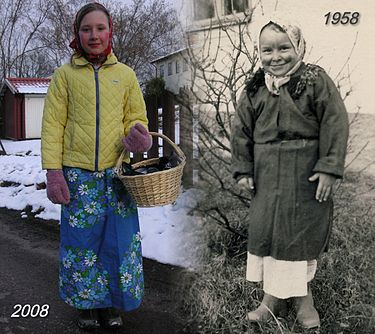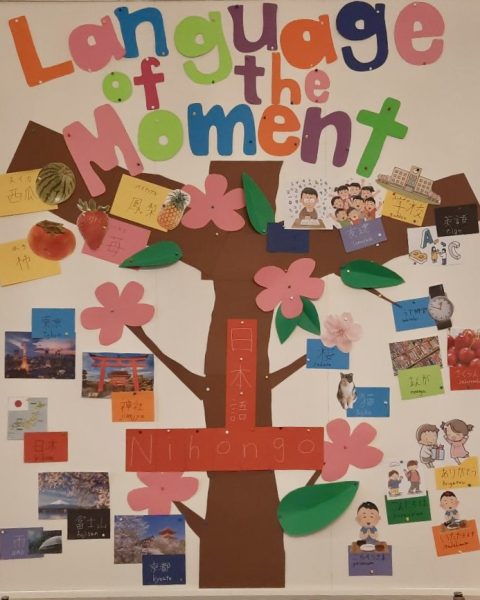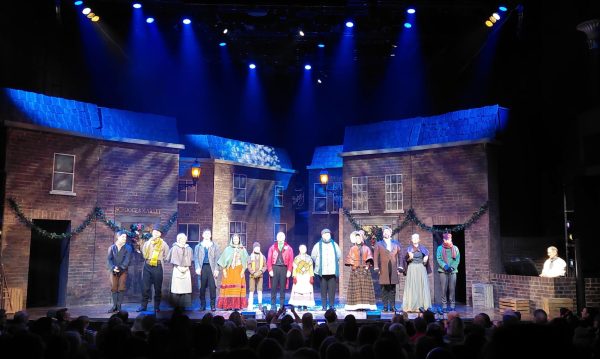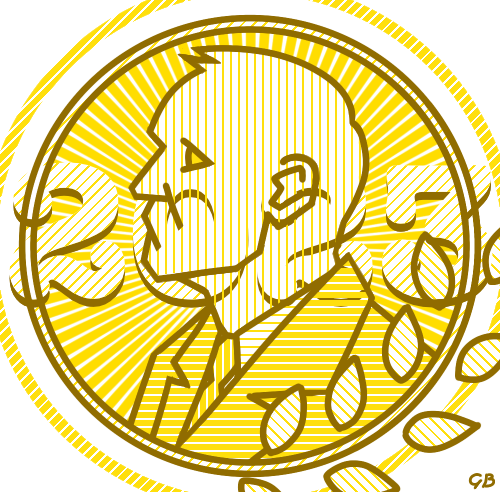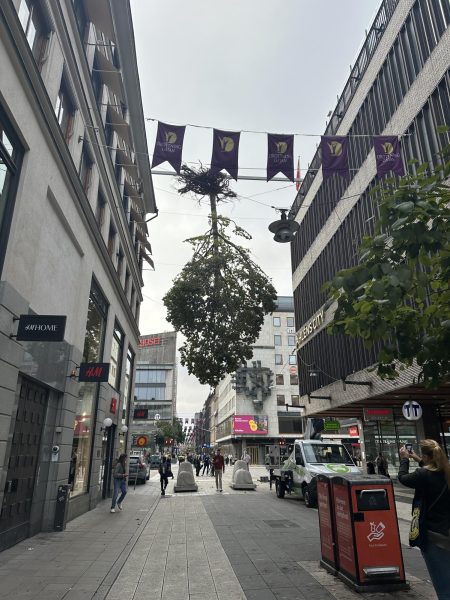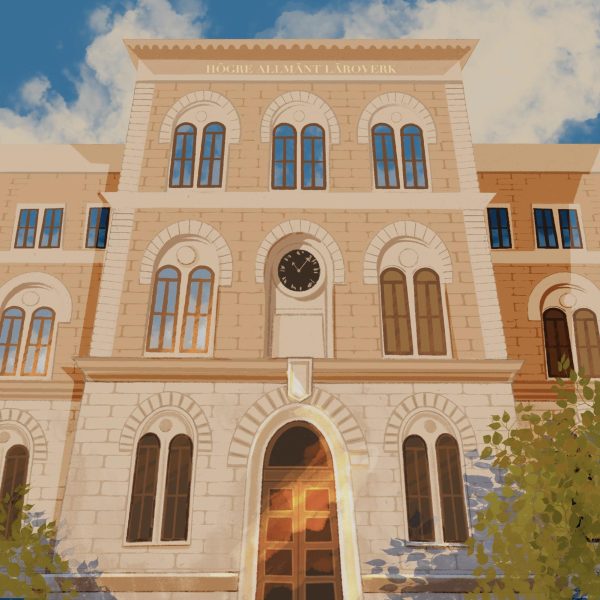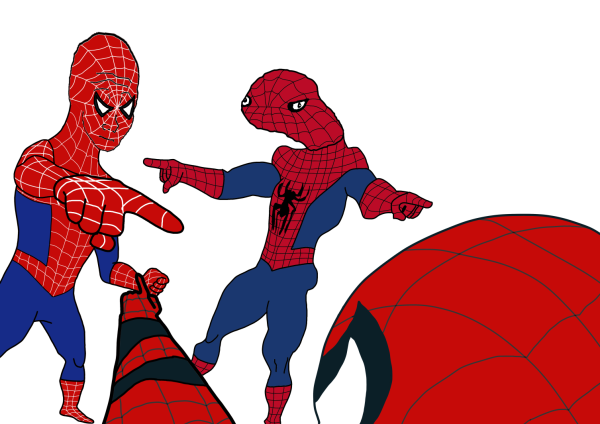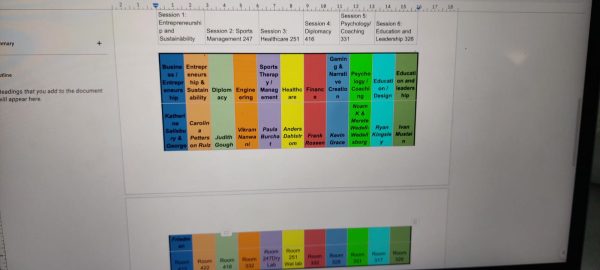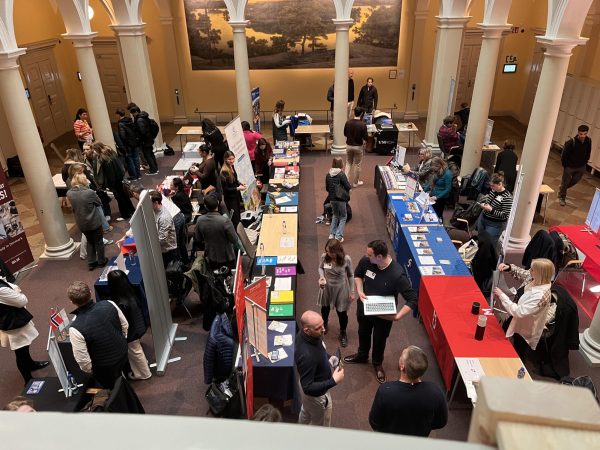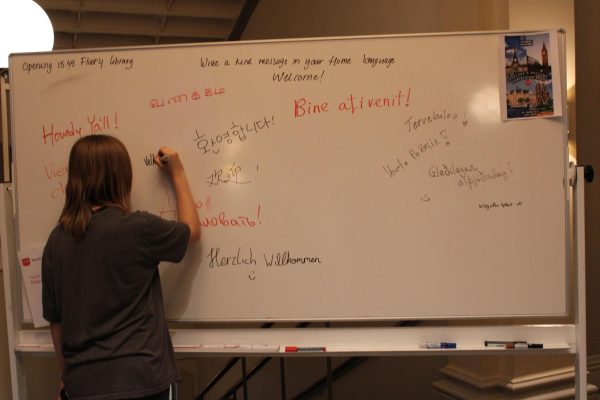Påsk
Easter is originally a religious holiday, celebrating the resurrection of Jesus in the Bible. In Sweden however, it is has become a much more secular holiday, instead becoming a mix of old folk beliefs, Nordic and Christian traditions.
The most popular of these is the “påskkärring” which is an Easter witch who flies to a place called “Blåkulla” on Thursday, and returns on Easter day. On that Thursday (in most of Sweden) children dress up as “påskkärringar” and essentially go around Trick or Treating. They will make Easter cards and give them to their neighbours, who will then repay them with sweets or other small gifts.
Another interesting tradition is “Påskris” which are twigs that are just beginning to flower, often from birch trees, which are decorated with feathers or sometimes painted eggs. Originally, they represent the palm leaves that were spread in front of Jesus upon his arrival in Bethlehem, although these days many just interpret the flowering twig decorations as a nice way to welcome spring. Other decorations include hares, chickens and decorated eggs.
Easter food these days mostly consists of different types of fish, although it used to be made up mostly of meat and eggs, as they were not allowed during the fasting period before Easter. There are also many chocolate eggs and other Easter sweets eaten at this time of year. During Easter, the most popular drink is “Påskmust” which is basically Swedish Easter Cola. Despite most companies using the same recipe as they use for their “Julmust” (Christmas Cola) many Swedes will not admit that it might be the same drink.
There are many types of Easter eggs, as the name can be used to refer to many types of decorated eggs. There are chocolate eggs to be eaten and paper eggs for decorations, as well as eggs that can be opened and filled with sweets or different gifts. There are also regular hens eggs that can be painted for fun and as decorations.
Schools in Sweden tend to celebrate the holiday by closing, either the week before Easter, or the actual Easter week.
If you are interested in learning more about the Julmust/Påskmust debate and happen to understand Swedish, you might be interested in reading this blogger’s investigation abou it:
http://addictedtojulmust.se/2010/04/den-eviga-fragan-ar-julmust-och-paskmust-samma-sak/
Happy Easter!


